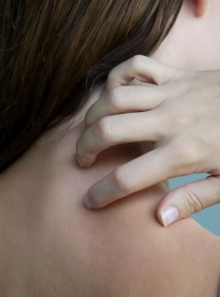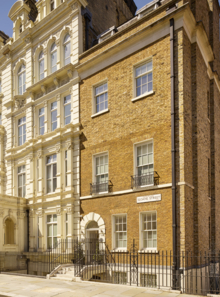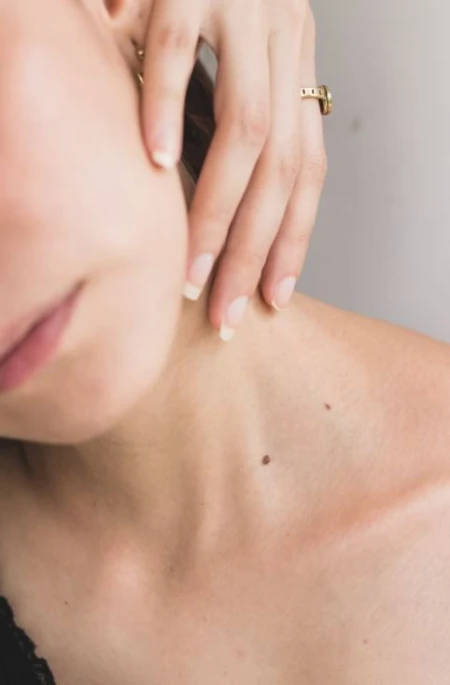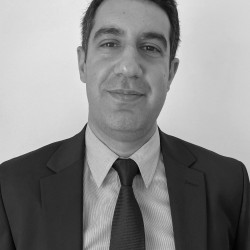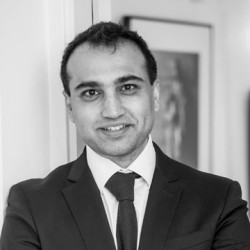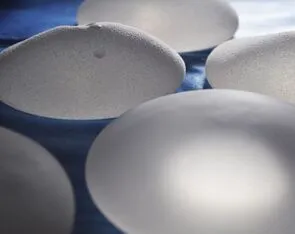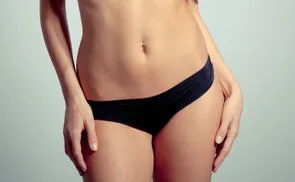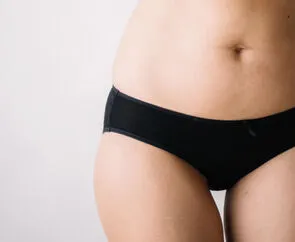Medically Reviewed January 2024,
by Dr. Susan Mayou (GMC: 2405092) - founder of the Cadogan Clinic and one of the world's leading dermatologists
What is a Cyst
A cyst is a pouch-like capsule of membranous tissue that contains fluid, air, or other substances. Cysts can grow almost anywhere in the body or under the skin.
There are many different types of cysts. Most cysts are benign, or noncancerous. But it can be difficult to tell whether a lump is a cyst or something else that might need treatment. It is recommended that you see a medical professional to make sure any sort of lump can be properly diagnosed.
Cysts can vary in size from smaller than a pea to measuring a few centimetres across. Cysts usually grow slowly.
Get in touch
Why do people have cysts removed?
Some cysts are painless and do not cause any symptoms at all. Sometimes cysts can go of their own accord. However often medical treatment is required to remove them.
If a cyst becomes infected or inflamed, the best thing to do is seek medical advice and have the growth removed. A cyst that is located on a part of the body which causes pain or discomfort, for example, a popliteal cyst at the back of the knee, is also a candidate for removal. Any cyst which has a negative impact on bodily function, for example, a cyst on the eyelid which is causing blurred vision, should be removed.
Some people with cysts find they have a negative impact on their self-confidence and self-esteem. This can be particularly acute if the cyst is somewhere particularly noticeable or prominent, for example on the face.
If you have any cyst or growth on the skin which is painful, itchy or bleeding, or a lump or bump which is growing and changing size, shape and colour, we suggest you seek urgent medical advice.
Who is suitable?
Cyst removal is safe, effective and suitable for adults and children. If a patient is particularly prone to scarring, or at risk of hyperpigmentation or hypopigmentation, the Cadogan Clinic’s team of plastic surgeons works closely with our expert dermatologists.
With cryotherapy treatment, the risks are minimal. It is considered to be safe for pregnant women. Sometimes cryotherapy is not suitable to treat very young children because they may find the treatment too painful or struggle to stay in the same position while having the treatment.
Our specialist dermatologists here at the Cadogan Clinic can advise on the most appropriate cyst removal treatment option for you, answer any questions and talk through any concerns you may have. We have invited a selection of the country's very best consultants to join us at the Cadogan Clinic so that you can be sure that whatever the nature of your treatment, you will be seeing one of the top practitioners in the country.
The cost of Cyst Removal
Dermatologist-led: Our cyst removal service is dermatologist-led, meaning that every cyst removal patient is seen and treated by a trained dermatologist.
Plastic surgeon-supported: We have a team of fifteen plastic surgeons who provide support to our dermatology team for more complex removal cases or reconstructions, or in cases where the patient is particularly sensitive to scarring.
Rapid, same-day removal: We are able to offer rapid, same-day removal of cysts due to our three fully staffed on-site theatres here at our Chelsea-based clinic.
Types of Cyst
Some of the more common types of cysts include:
Epidermoid cyst
These are small, benign bumps filled with the protein keratin. If a person has sustained trauma around a hair follicle within the skin, an epidermoid cyst may develop.
If part of the top layer of your skin, called the epidermis, grows deeper instead of moving outward toward the surface to eventually be shed off, an epidermoid cyst will have a chance to form. In rare cases, this type of cyst can be caused by an inherited condition called Gardner’s syndrome.
Sebaceous cyst
Sebaceous cysts fill with sebum and often form within sebaceous glands which make oil for the skin and hair. Ruptured or blocked sebaceous glands can lead to sebaceous cysts.
These are less common than epidermoid cysts.
Breast cyst
These are benign cysts that can develop in the breasts when fluid collects near the breast glands. This can cause pain or tenderness.
Breast cysts commonly occur in the breast tissue of women in their 30s and 40s.
Ganglion cyst
Ganglion cysts usually form near the joints in the wrist or hand, but can also be found in the feet or ankle areas. They tend to develop along a tendon sheath near a joint and are more common in women than men. It is not known what causes these benign cysts.
Pilonidal cyst
These cysts are usually filled with skin debris, body oils, hair and other matter and appear near the top part of the buttocks. They can develop when loose hair becomes embedded in the skin. Pilonidal cysts are more commonly found in men rather than women.
Chronic infections in these cysts might increase the risk of a type of skin cancer called squamous cell carcinoma.
Ovarian cyst
Ovarian cysts often form when the follicle that normally releases an egg doesn’t open, causing a build-up of fluid to form a cyst. Ovarian cysts can also develop if the follicle releases the egg and doesn’t close properly, therefore collecting fluid. Most ovarian cysts occur naturally and go away in a few months without needing any treatment. An ovarian cyst usually only causes symptoms if it splits (ruptures), is very large or blocks the blood supply to the ovaries. If this happens, seek urgent medical advice.
Ovarian cysts occur most often in people who are still menstruating. Ovarian cysts are associated with an increased risk of cancer when they occur after menopause.
Baker's (popliteal) cyst
A Baker’s cyst, also known as a popliteal cyst, is a fluid-filled cyst that forms at the back of the knee. Injury or arthritis are common causes of this type of cyst. This can limit mobility and cause pain.
Pilar cyst
Pilar cysts are skin-coloured, benign lumps that form on the skin’s surface. They are not cancerous, but they can grow to a size that can cause a person discomfort.
It is not always necessary for this type of cyst to be removed, but they are often removed purely for cosmetic reasons.
Mucous cyst
A mucous cyst is a fluid-filled lump that forms on the lip or around the mouth area, occurring when the salivary glands become clogged with mucus. The most common causes of mucous cysts include lip or cheek biting, poor dental hygiene or lip piercings.
These cysts often go away on their own, but if they reoccur, they may require medical treatment.
Branchial cleft cyst
Branchial cleft cysts look like a large skin tag and develop on an infant’s neck or below the collarbone. Surgical removal is often recommended to prevent the cyst from becoming infected.
Perineural (tarlov) cyst
A perineural cyst is a fluid-filled sac that forms on the spine. Most of the time, there are no symptoms. Any symptoms can be relieved by draining the fluid from the cyst.
Chalazion
Chalazia are benign growths that develop on the eyelids when an oil gland becomes blocked. These can cause pain and tenderness and sometimes lead to vision problems. In these cases, treatment is recommended.
Cystic acne
Cystic acne is caused by a combination of bacteria, oil, and dead skin clogging the pores. This can look like large, pus-filled boils on the skin, which may be painful to touch. Luckily this type of acne usually improves with age.
Folliculitis (ingrown hair cyst)
Folliculitis is an inflammatory and usually infectious condition caused by hair growing into the skin. This is usually caused by hair removal methods such as waxing or shaving. Medical treatment is not usually required, but it is advisable to seek help if the cyst has become infected.
Cysts are usually benign and are removed for aesthetic reasons. That said, occasionally they can prove to be a sign of something more dangerous on deeper investigation, and worthy of deeper professional attention.
As such, we always recommend that you do not wait for a cyst, or any skin lump or bump, simply to go away, and instead seek professional medical attention. Where the health of your skin is concerned, it's always better to be safe than sorry.
How does Cyst Removal work?
The treatment for cysts varies depending on the type of cyst and whereabouts on the body it is located. A cyst will need to be treated if it is causing pain or discomfort or it has become infected. Signs of infection include tenderness, soreness, turning red in colour and foul-smelling pus coming out of the cyst.
We offer two cyst removal treatments here at the Cadogan Clinic.
The most common method of cyst removal is excision removal. This means the cyst is surgically removed from the body. This method may be used if draining the cyst has not worked or a patient has an internal cyst which is hard to reach.
This method of cyst removal sees the growth carefully cut away using a scalpel and completely removed, leaving only a small white or pink scar in its place
Another highly-effective cyst removal method is cryotherapy. Cryotherapy can be used to treat a wide variety of superficial benign skin lesions.
In this particular treatment, liquid nitrogen gas is used to freeze the target area. The cold temperature kills the affected cells, blocking the blood supply to the area and causing it to naturally fall off. Sometimes ongoing treatment may be required.
Book a consultation with one of our expert dermatologists here at the Cadogan Clinic to discuss which treatment option would be best for you.
Cyst Removal Surgeons
We have invited a selection of the country's very best consultants to join us at the Cadogan Clinic so that you can be sure that whatever the nature of your treatment, you will be seeing one of the top practitioners in the country.
Cadogan Clinic. A strong tradition of innovation

Founded in 2004 by world renown dermatologist Dr Susan Mayou, we now work with over 100 leading consultants and successfully treat over 20,000 patients each year. We have been winning industry awards since inception.
Get in touch
Frequently Asked Questions
What causes cysts?
Cysts can form for different reasons. The exact cause depends on the type of cyst and where on the body they have developed.
In skin cysts, such as epidermoid or pilar cysts, some of the cells in the top layer of skin produce keratin, a protein that gives skin its strength and flexibility.
Normally, these cells move up to the surface of the skin as they start to die so they can be shed. However, sometimes the cells instead move deeper into the skin and multiply, forming a sac. They secrete keratin into the middle of the sac, which forms a thick, yellow paste. This paste can ooze out of the cyst if it is burst.
A person is more likely to develop a skin cyst if they have passed puberty, if they have a history of acne or have sustained an injury to the skin (a damaged hair follicle, for example). However, anyone can develop a skin cyst, regardless of their age, skin health, gender or ethnicity. Skin cysts are not contagious.
More generally, cysts can be caused by:
- Infections
- Inherited diseases
- Genetics
- Chronic inflammation
- Blockages in ducts
Some cysts occur as part of another condition, such as PCOS (polycystic ovary syndrome) or PKD (polycystic kidney disease).
How do I get rid of a cyst?
Depending on the type of cyst, sometimes they can improve on their own. Putting a warm compress on a cyst can help it to drain, speeding up the healing process. However, often medical treatment, such as surgery, is the only option.
Never try to squeeze or pop a cyst. If it is infected, bursting the cyst can risk spreading the infection. A skin cyst can grow back if the sac is left underneath the skin.
We would recommend making an appointment with one of our expert dermatologists here at the Cadogan Clinic to discuss the treatment options open to you.
What is the best cyst removal treatment?
The best cyst removal treatment depends on the size, location and nature of the cyst.
Excision removal, where the cyst is surgically removed from the body, is the best way of ensuring the whole cyst is removed.
Surgical excision or cryotherapy will permanently remove the cyst targeted by treatment. However, it will not prevent new lumps and bumps from appearing in new locations on the skin.
If a cyst is cancerous, a different course of action may be required.
We recommend seeking a professional opinion if you have any type of skin lump or bump on your body. If it is painful, itchy or bleeding, we suggest you do so urgently. It should also be seen urgently if it is growing and changing size, shape and colour.
What cyst removal options are available?
Excision removal and cryotherapy are fast and effective treatments for cysts.
Medical professionals may also use a needle to drain fluids and other matter from the cyst. However, cysts can refill after being drained. Anyone who has a cyst that continues to refill may want to consider having it surgically removed.
Medication, such as corticosteroid injection, may be prescribed to reduce inflammation in the cyst.
We recommend booking an appointment with one of our expert dermatologists here at the Cadogan Clinic to discuss which treatment option would be most suitable for you.
How can I prevent cysts?
Unfortunately, most types of cysts cannot be prevented. However, there are a handful of exceptions.
Women prone to ovarian cysts may be able to prevent new cysts from forming by using hormonal contraceptives. Make an appointment with your GP to discuss this further.
Pilonidal cysts, which appear at the top of the buttocks and are more commonly found in men rather than women, can be prevented from forming by keeping the skin in the affected area clean and dry. Getting up every so often instead of sitting for a long time can also help prevent this type of cyst from developing.
Cleaning the eyelid near the eyelash line with a gentle cleanser and removing all traces of eye makeup before going to bed can help keep the oil ducts in this delicate area from becoming blocked. This may help prevent chalazia.
Here at the Cadogan Clinic, we treat thousands of skin lumps and bumps cases each year, including cysts. Our team of nine highly experienced specialist dermatologists have been handpicked to form one of the best independent dermatology units in the country. Our purpose-built dermatology clinic is conveniently located off Sloane Square.
The Cadogan Clinic’s team of experts will be happy to talk you through the treatment options open to you. Get in touch today to book a consultation with one of our dermatologists for an in-person assessment of your skin.
How To Find Us
The Cadogan Clinic is based at 120 Sloane Street in Chelsea, just off Sloane Square and the Kings Road.
We are accessible by all major bus routes that pass through Sloane Square and Sloane Street, as well as Sloane Square tube station.
We are just a 5 minute walk northwards up Sloane Street once you have arrived at Sloane Square.
Local pay parking is available just around the corner from the Clinic on Cadogan Gate, Cadogan Square and Cadogan Gardens. Our local residential parking zone is the Royal Borough of Kensington & Chelsea.
Address: 120 Sloane Street, Chelsea, London, SW1X 9BW



